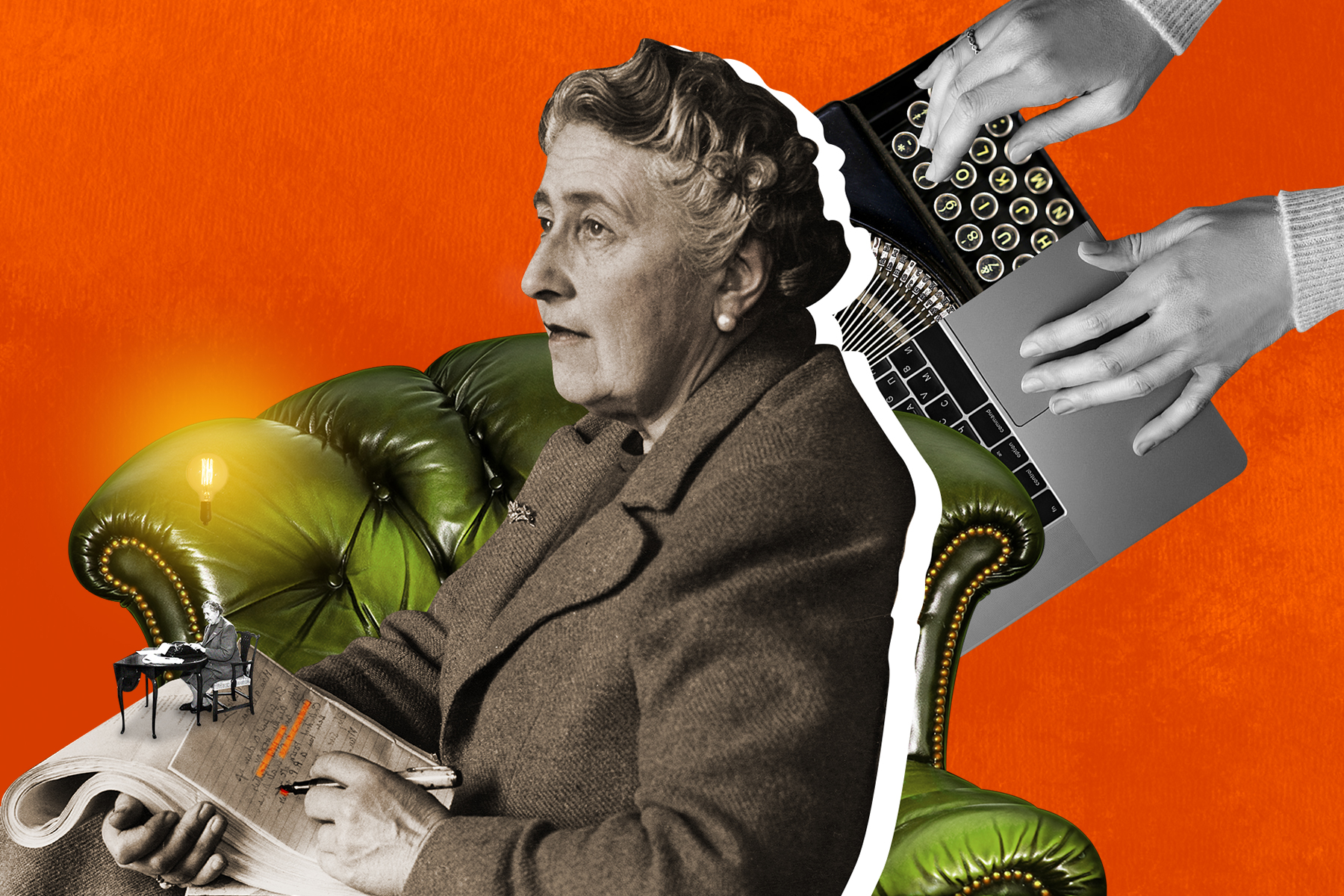
How Agatha Christie turns readers into bestselling novelists
When authors talk about formative childhood books, few names sprout up more than Agatha Christie’s. We asked Lisa Jewell, John Boyne, and a host of others: What is it about her mysteries that inspire readers to become writers?
Whenever debut novelist Frances Cha goes home to Korea for the summer, she embarks on a ritual: “I reread my entire Agatha Christie collection,” the author of If I Had Your Face says, “which is about 65 of her books.” Before she wrote a word of any of her hugely successful thrillers like The Night She Disappeared or The Family Upstairs, Lisa Jewell “stumbled upon Agatha Christie” in the library at about 12 years old, then “read all her books over the space of a year.” And just last month, author John Boyne tweeted, “Do you have a comfort author you return to when nothing in your To Be Read pile seems to be calling out to you? Here’s mine”, accompanied by a photo of his extensive bookshelf of Agatha Christie spines.
A century on from the beginning of her publishing career, Agatha Christie’s allure remains undiminished. And that’s saying something: referred to regularly as The Queen of Crime, her name has been synonymous with mystery and thriller novels since the mid-20th Century, when she was the first recipient of the Mystery Writers of America's Grand Master Award in 1955; her characters, Hercule Poirot and Miss Marple, have become household names, thanks not just to the ubiquity of her books but the popularity of their adaptations to television, cinema (Death on the Nile was just released to international theatres this month), and other media.
Absorbing Christie's works increasingly feels like a rite of passage for novelists, the first step on the road from young reader to published author
Jewell compares the act of reading Christie as a 12-year-old to having a great teacher at school: “She manipulates you, but not in a sinister way; in a masterful way, being manipulated by someone who knows what's going on inside your brain and what switches to flick to make you feel the way that she wants to make you feel.”
That Christie’s work achieved all of this, Jewell says, despite her 12-year-old self feeling “no relationship at all” to Christie’s characters – “these strait-laced, upper middle-class types who spoke the Queen's English” – speaks particularly to Christie’s incredible mastery of form.
John Boyne, who notes that Christie had quite a significant effect on his fourth novel, Next of Kin, shares a knowing laugh about Christie’s characters – “It’s almost always quite upper-class people killing each other, and when they're discovered they're awfully sorry, and immediately hand themselves in to, you know, Poirot or Miss Marple” – but agrees that it’s her expertise with pacing that makes her work so formative.
“Her plots are always interesting, and they're very well structured. You’re addicted to them because the mystery draws you in; you want to figure it out in advance who did it.”
Practice with Agatha Christie’s books, he says, makes perfect; the more you read her, the better you get at cracking her plotting style. Like Jewell, he compares Christie’s structuring to a crossword puzzle.
“People who are really big into crosswords get to know a setter’s style, and the clues that they leave; you become better at them because you're familiar with it. Any kind of crime writer like that will have a certain style and a certain way of doing things, and I don’t mean that in a critical way; I mean it quite affectionately. You become familiar with it, and then you kind of want to solve them more.”
Yet, Christie has a way of outdoing herself, too: “She has a couple of books that are absolutely among the best ever written. The Murder of Roger Ackroyd, for example, is probably the best crime book ever written. And Murder on the Orient Express has an incredible twist – everybody knows that one.”
Both Boyne and Jewell, fans from young ages themselves, can see why Christie’s book appeal to a younger audience. Boyne sees Christie’s work as a perfect bridge from Young Adult fiction, “something that you read when you're putting children's books behind you,” to move to “the major works of literature.”
'You’re addicted to [Christie's plots] because the mystery draws you in; you want to figure it out who did it'
Jewell says that it was her first taste of something more mature: “Teenagers want to have all those feelings, they want to have somebody stick their hands in their brains and press buttons and make things happen in a really intense way, and she gave me something that just absolutely consumed me. It was that perfect sort of pre-teenage, pre-sexual awakening for someone wanting and needing something that's not just playing with dolls, or, you know, watching children's TV with your sisters.”
Robin Stevens, one of YA’s most successful authors and the creator of the Murder Most Unladylike series, wrote on this very site about Christie’s appeal to young readers, and her influence on Stevens’ own work.
“Reading her books has helped me write for the audience that I do. Although she didn’t target 9-to-12-year-olds herself, she’s still widely read by that age group, and I think there’s a very clear reason why. First, Christie is simple – a skill that most writers, for both adults and children, never achieve. She writes with absolute clarity and vividness; you can follow along with every step of a Christie, just one pace behind the detective, so that when [the ending] comes you’re amazed but satisfied – you really almost knew it!”
What did you think of this article? Email editor@penguinrandomhouse.co.uk and let us know.
Image above: Flynn Shore / Penguin
Photo credit: Hulton Deutsch / Boston Globe / Bettmann / Getty Images